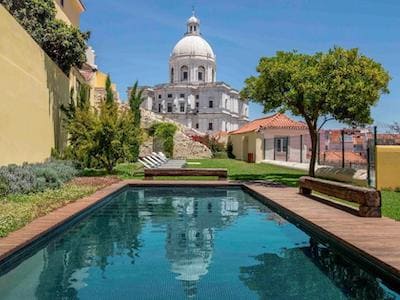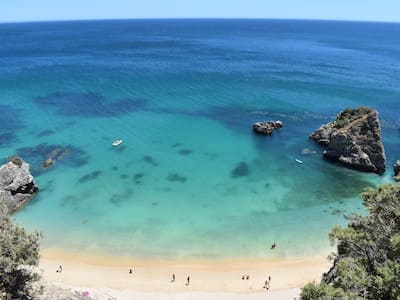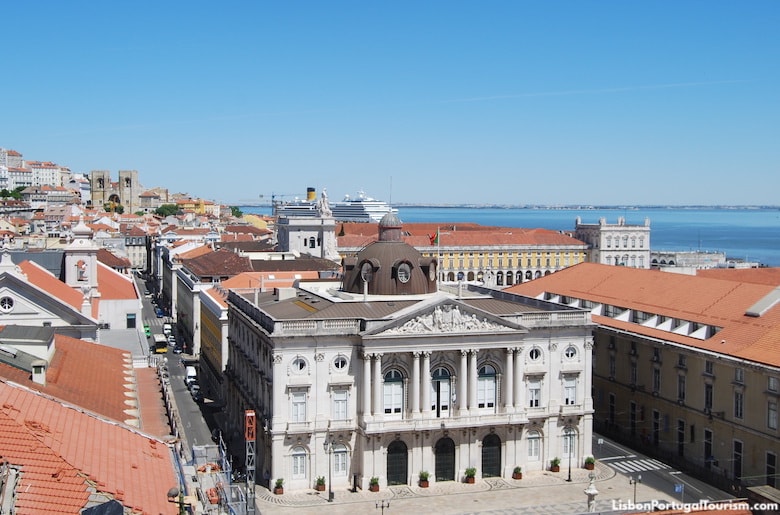
View over Baixa, downtown Lisbon
Nestled between the city’s two tallest hills, downtown Lisbon is a contrast to the old quarters’ mazes of narrow lanes. Following the Enlightenment ideals of order and elegance, it’s an orderly grid of wide streets, laid out after most of the area was devastated by the Great Earthquake of 1755. It was quite revolutionary at the time, for the width of the streets and for essentially being one big shopping mall, clustering different trades. There’s Rua do Ouro (the “Street of Gold”) for goldsmiths, Rua da Prata (“Silver Street”) for jewelers, Rua dos Sapateiros (“Shoemakers Street”), and others that survive to this day, although, of course, the businesses are quite different. Most shops are international chains, and many of the buildings are hotels. It’s the most touristy part of town, with the city’s main pedestrian street (Rua Augusta) linking the grand 18th-century squares. To the north is Rossio (the square marking the center of the city, with an iconic wave-patterned pavement), while to the south, on the waterfront, is the majestic Praça do Comércio, one of Europe’s largest squares. To the west is the small Praça do Município, home to the neoclassical palace of the Town Hall, and also featuring the city’s trademark cobbled designs (although these are quite recent, from 1997, imagined by painter Eduardo Nery, who wanted to create a “carpet effect”).
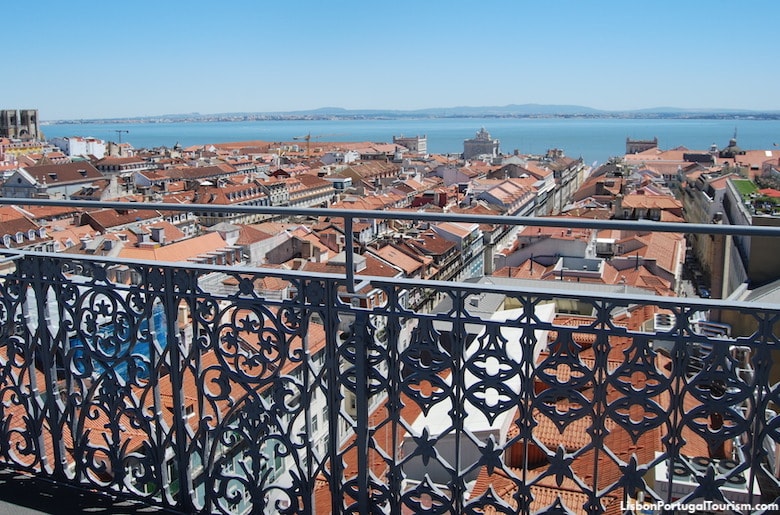
View over Baixa from the top of the Santa Justa Elevator
The entire area is awaiting World Heritage recognition, as it resulted from the world’s first large-scale earthquake-proof urban planning, using standardized prefabricated buildings. It was a new state-of-the-art city, with modern sanitation and strict building codes, that later inspired the Paris of Baron Haussmann and the Barcelona of Ildefons Cerdà.
Underground are some of the most significant remains of Roman Lisbon, which are usually flooded, so only open for visits once a year. They are tanks used to salt fish and foundations of a large building, perhaps a temple. Nearby is an archaeological site with more Roman ruins, on Rua dos Correeiros (more details below). In addition to Roman fish tanks and coins, and a well-preserved mosaic, this site reveals traces from the Iron Age to the 18th century.
What to See and Do in Baixa

Lisbon's grandest square faces the river and welcomed those arriving in the city by boat. It was once home to the royal palace, but it was completely destroyed in the 1755 earthquake. The redesigned square added a triumphal arch, and at the center is a monument to the king who reigned at the time of the disaster. Here is also Lisbon’s oldest café, a tourist office, a museum telling the history of the city, and a number of cafés and restaurants under the arcades.
See the Praça do Comércio Visitor's Guide.
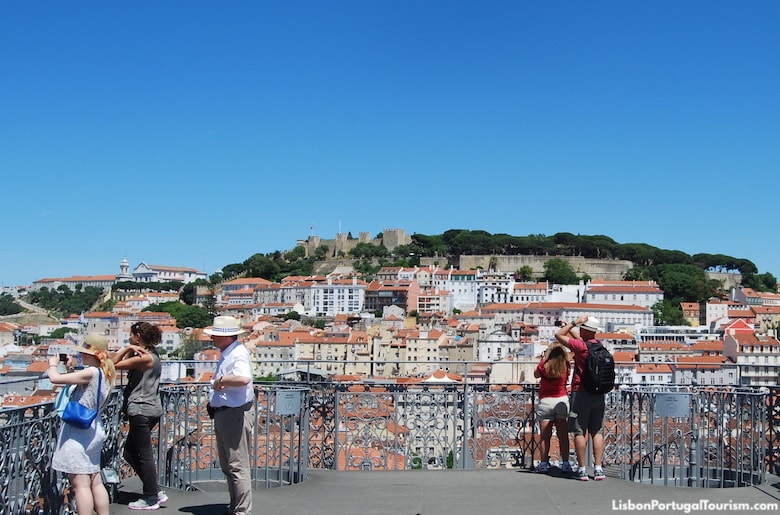
Inaugurated in 1902, this 45m-high (148 ft) elevator links downtown to the hilltop district of Chiado, and is one of Lisbon’s most visited and photographed landmarks. Its iron architecture was inspired by Paris’ Eiffel Tower, and from the top (reached via a spiral staircase) there’s a breathtaking 360-degree view of central Lisbon.
See the Santa Justa Elevator Visitor's Guide.
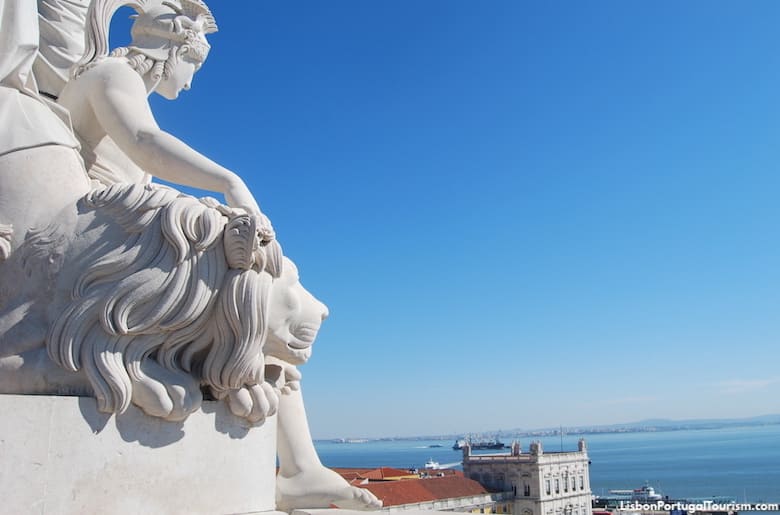
It’s one of Lisbon’s most iconic monuments and it offers one of the city’s best views. This triumphal arch, designed in 1775 to welcome those arriving in Lisbon by sea, opened its terrace for the first time in 2013, allowing visitors to get close to its sculptures and to admire a view over the city’s grandest square and main pedestrian street.
See the Rua Augusta Arch Visitor's Guide.
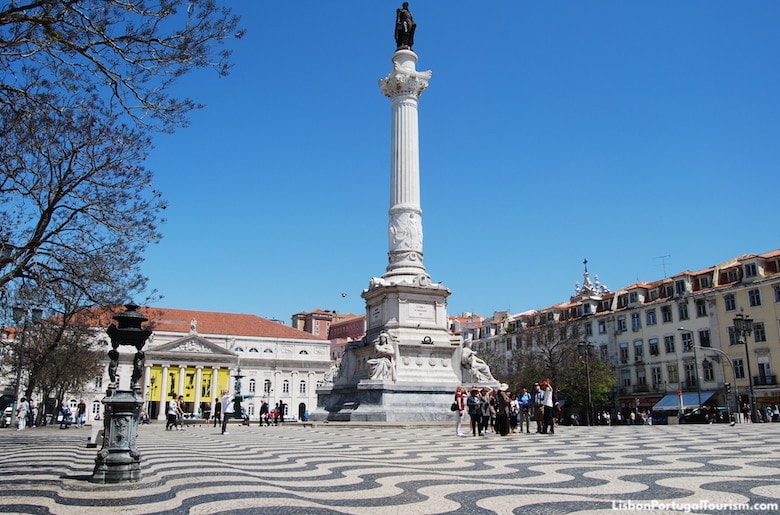
This historic square marks the very center of Lisbon. Its wave-patterned pavement was reproduced in other parts of Portugal and its colonies (like Rio do Janeiro and Macau), and can be admired from the benches around it or from the outdoor cafés in the surroundings. On the north side is a neoclassical theater, which faces two baroque fountains and a monument to King Pedro IV, whom the square is officially named after.
See the Rossio Square Visitor's Guide.
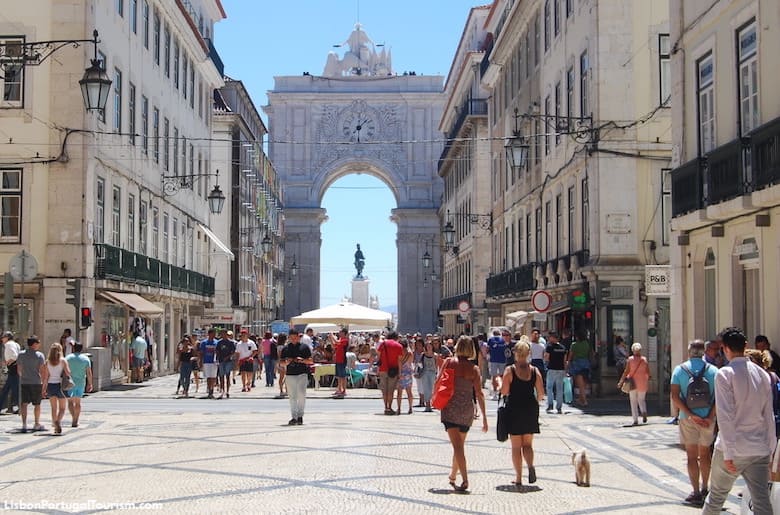
Lisbon’s main pedestrian street links Rossio to Praça do Comércio. It’s a lively place, with outdoor restaurants, street artists, and local and international shops.
See the Rua Augusta Visitor's Guide.
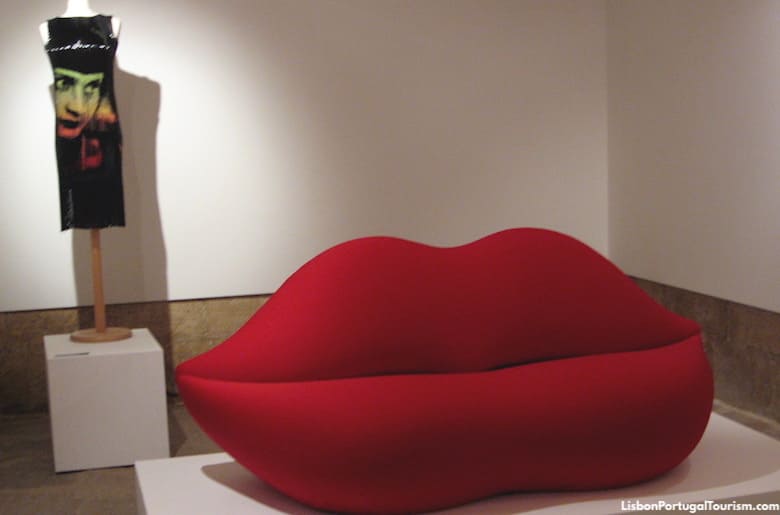
It was considered one of Europe’s best design museums when it opened in 1999, and it now also has a fashion collection. Pieces by the great design names like Charles & Ray Eames and Le Corbusier are displayed next to the creations by Christian Dior, Tommy Hilfiger and Yves Saint Laurent, among other leading international designers, in what was once a bank.
See the MuDe Visitor's Guide.
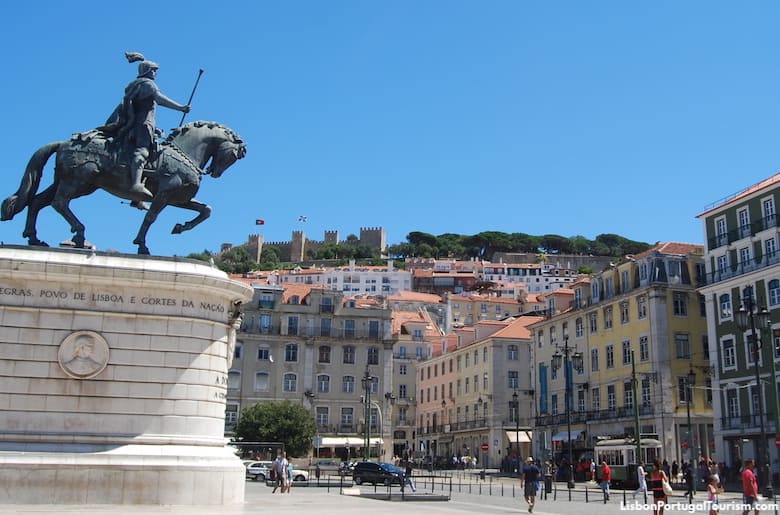
This square was once home to Lisbon’s biggest covered market, but nowadays it’s mostly a transportation hub, with trams and buses departing to some of the city’s most popular sights. A food market does still take place here, but only once a month. It has a view of the castle and an equestrian statue of King João I, which faces one of Lisbon’s oldest pastry shops, the Confeitaria Nacional.
See the Praça da Figueira Visitor's Guide.
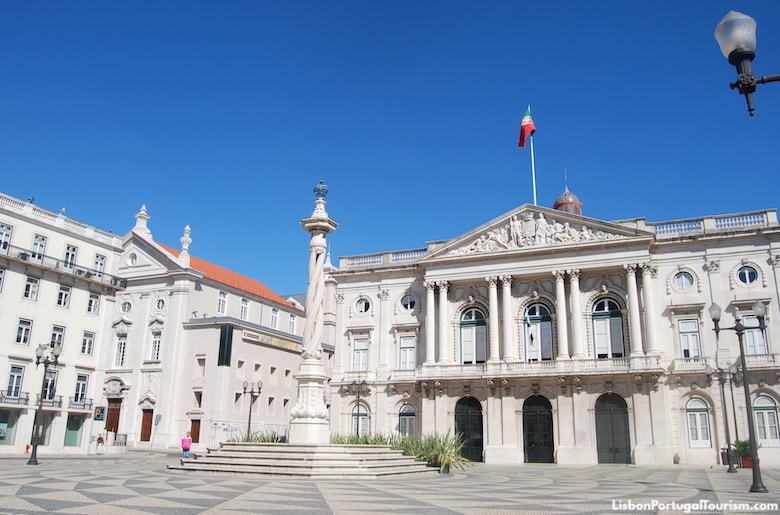
Faced by the neoclassical palace of the Town Hall (which opens for visits on the first Sunday of the month), this elegant square is paved with the city’s trademark cobblestone designs, using triangles and rectangles to create a “carpet effect.” At the center is an 18-century spiral pillory, faced by a kiosk café serving refreshments throughout the day.
See the Praça do Município Visitor's Guide.
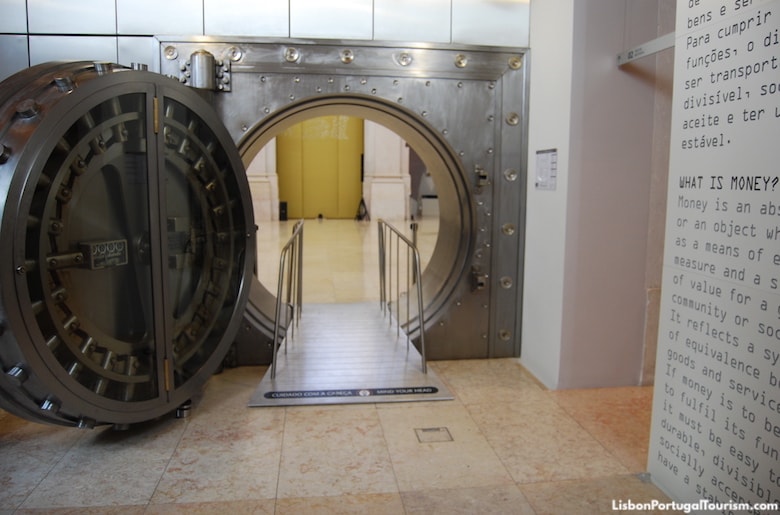
Housed in a former church from the 1600s, this museum presents the history of money in the world, through an exhibition of rare banknotes and coins from around the world, including the first ones in the West and the East. Visitors may print a note with their image and mint a coin, as well as touch a gold bar worth half a million euros. On the lower level is an archaeological site with a section of Lisbon’s medieval wall.
See the Money Museum Visitor's Guide.
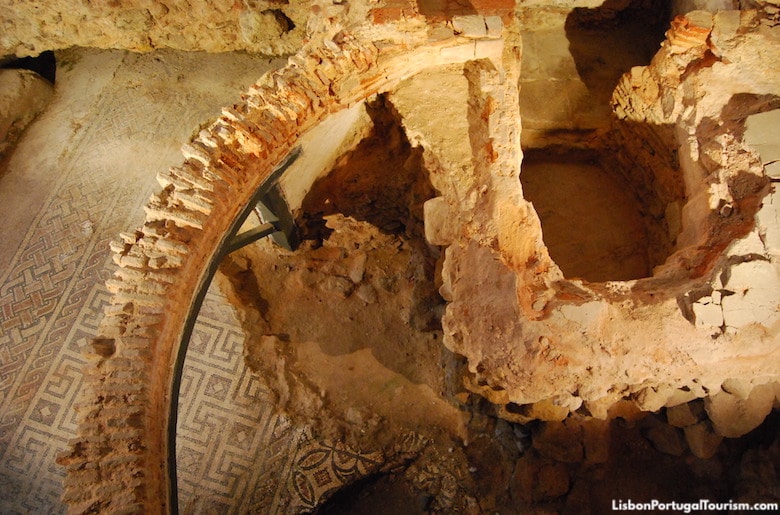
Archaeological excavations carried out in the 1990s revealed traces of 2500 years of Lisbon’s history. What was found is now on display below a bank’s headquarters, and includes well-preserved Roman mosaics.
See the Rua dos Correeiros Archaeological Site Visitor's Guide.
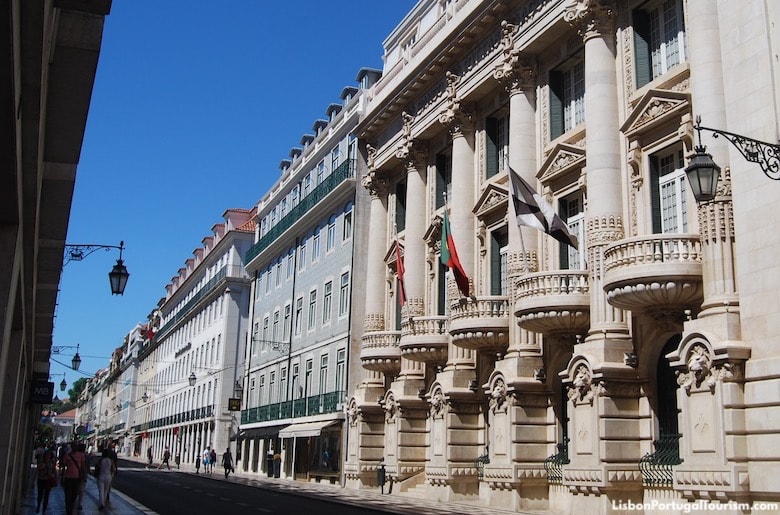
One of downtown’s most beautiful buildings, designed in Beaux-Arts style in 1905, was once a bank’s headquarters but became a museum in 2019. Many of the bank’s original pieces and furnishings have been kept in place to show visitors what banks looked like in the early days, but the rest of the building is now used for temporary exhibitions of contemporary art.
See the Edifício dos Leões Visitor's Guide.
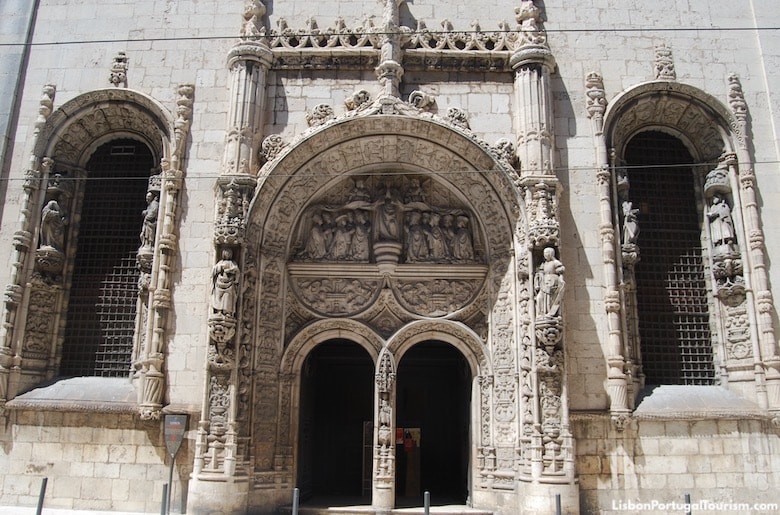
One of the finest examples of Manueline (Portuguese Gothic) architecture in Lisbon is the portal of this church, which was originally a Jewish temple. While the portal dates from the 1500s, the interior is a post-1755-earthquake reconstruction.
See the Igreja da Conceição Velha Visitor's Guide.
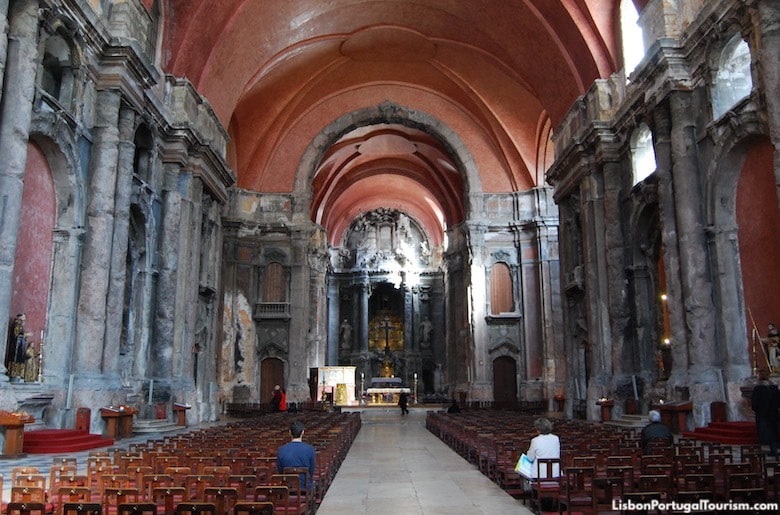
Twice a victim of a major catastrophe (the 1755 earthquake and a fire in 1959), this church’s interior has never been restored, and its scorched pillars are quite a striking sight. It was the site of some of Lisbon’s darkest periods -- it was where the Inquisition read out its sentences, and where hundreds of people accused of secretly being Jewish were massacred in 1506. A monument in their memory has been placed on the square outside, faced by a mural with “Lisbon, City of Tolerance” written in 34 languages.
See the Igreja de São Domingos Visitor's Guide.
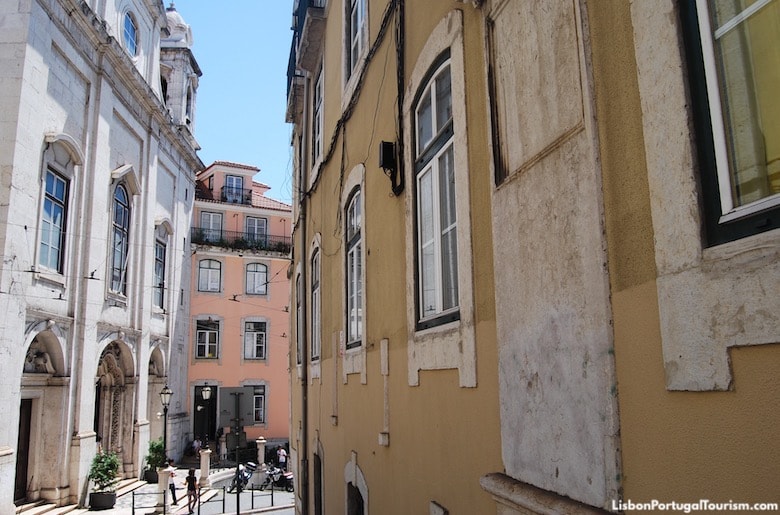
This church dedicated to Mary Magdalene is a 1783 reconstruction of a previous church, but has preserved the original Manueline portal from the 1500s. Inside, it has images by Machado de Castro, Portugal’s leading 18th-century sculptor. On the building across the street are stones from a Roman temple embedded on the façade.
See the Igreja da Madalena Visitor's Guide.
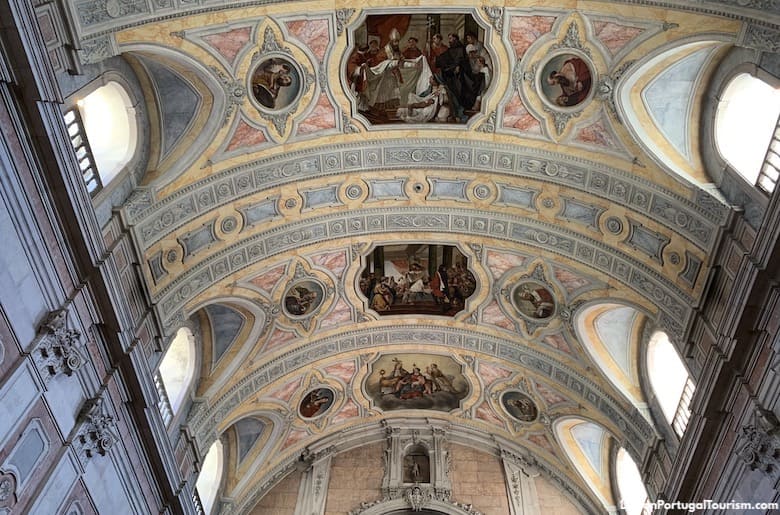
This neoclassical church was completely rebuilt in 1776, after it collapsed in the 1755 earthquake. It presents carefully-restored ceiling paintings illustrating scenes from the life of St. Nicholas.
See the Igreja de São Nicolau Visitor's Guide.
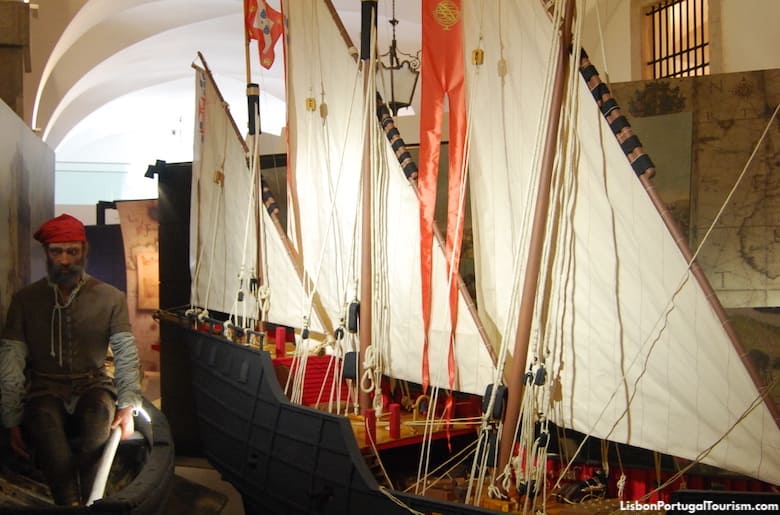
A large part of the east wing of Comércio Square was taken over by this museum telling the story of Lisbon through models and multimedia displays. Organized chronologically, it focuses on the main events and personalities that shaped the city over the centuries. The exhibition highlights five of the most dramatic episodes in the city's history, and is divided into six sections. The first one tells the myths and facts of the first settlers, another focuses on the "global city" resulting from the Age of Discovery, a third space is dedicated to the Great Earthquake of 1755, and that’s followed by "Pombaline Lisbon" or the state-of-the-art city redesigned by the Marquis of Pombal. That reconstruction led to the square where the museum is found, so another area is reserved for the depiction of life in the square over time. Finally, the last room focuses on general aspects of the city, and there's a gift shop for you to get your Lisbon souvenirs. There are also temporary exhibitions, and everything is accompanied by commentary through a multilingual audioguide.
It’s free with the Lisboa Card or you may buy your ticket online: Lisboa Story Centre Admission Ticket
Praça do Comércio
It opens every day
www.lisboastorycentre.pt
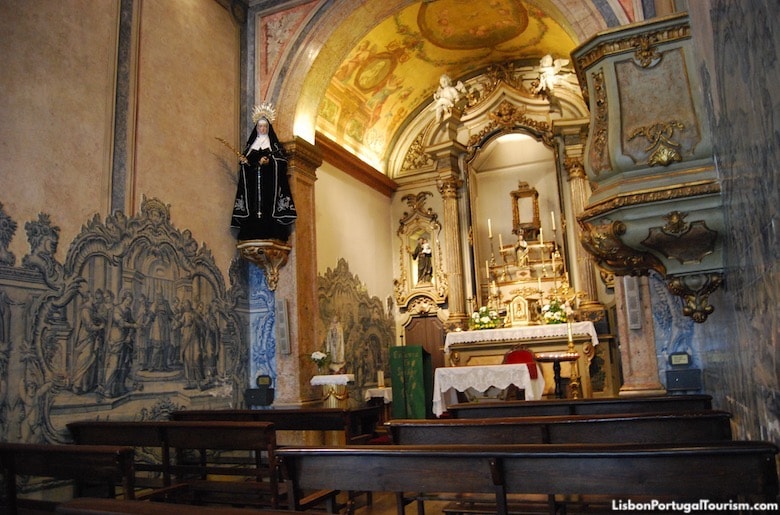
You blink and you miss this tiny church, even if you're standing right by the door. It's found in an ordinary building, but the interior is quite a surprise. The original temple dates from 1262, but this is the 1762 reconstruction after it was destroyed in the Great Earthquake of 1755. The ceiling features an 18th-century painting of the Assumption of the Virgin, while the walls are decorated with blue-and-white tile panels of the same period. They depict different events of the life of the Virgin, from Birth to "Flight into Egypt."
Rua de São Julião, 140
It's closed on weekends
How to Get to Baixa
All roads lead to Baixa. Many of the city’s main tram, bus, and metro lines stop at different parts of the district, and it’s also within walking distance of the neighborhoods of Alfama, Chiado and Bairro Alto. The metro’s Rossio station on the green line and the Baixa-Chiado station on the green and blue lines place you in the center of it all.
You may ride the metro, trams, buses, funiculars, and trains for free with the Lisboa Card.
Where to Stay in Baixa
The streets between Rossio and Comércio squares are home to most of Lisbon’s boutique hotels. They’re mostly of the 3- and 4-star categories, and are recent renovations of 18th-century buildings. Many maintain their historic character in the architecture and décor, and all are within walking distance of sights, restaurants, shops, and transportation. The most recommended properties face the main squares, from the grand Pousada de Lisboa in Comércio Square to the Internacional Design Hotel and My Story Rossio in Rossio. In Praça do Município is the AlmaLusa Hotel, while the highly-rated Hotel Santa Justa is by the landmark elevator of the same name.
For more details and recommendations, see the best hotels in Baixa.

